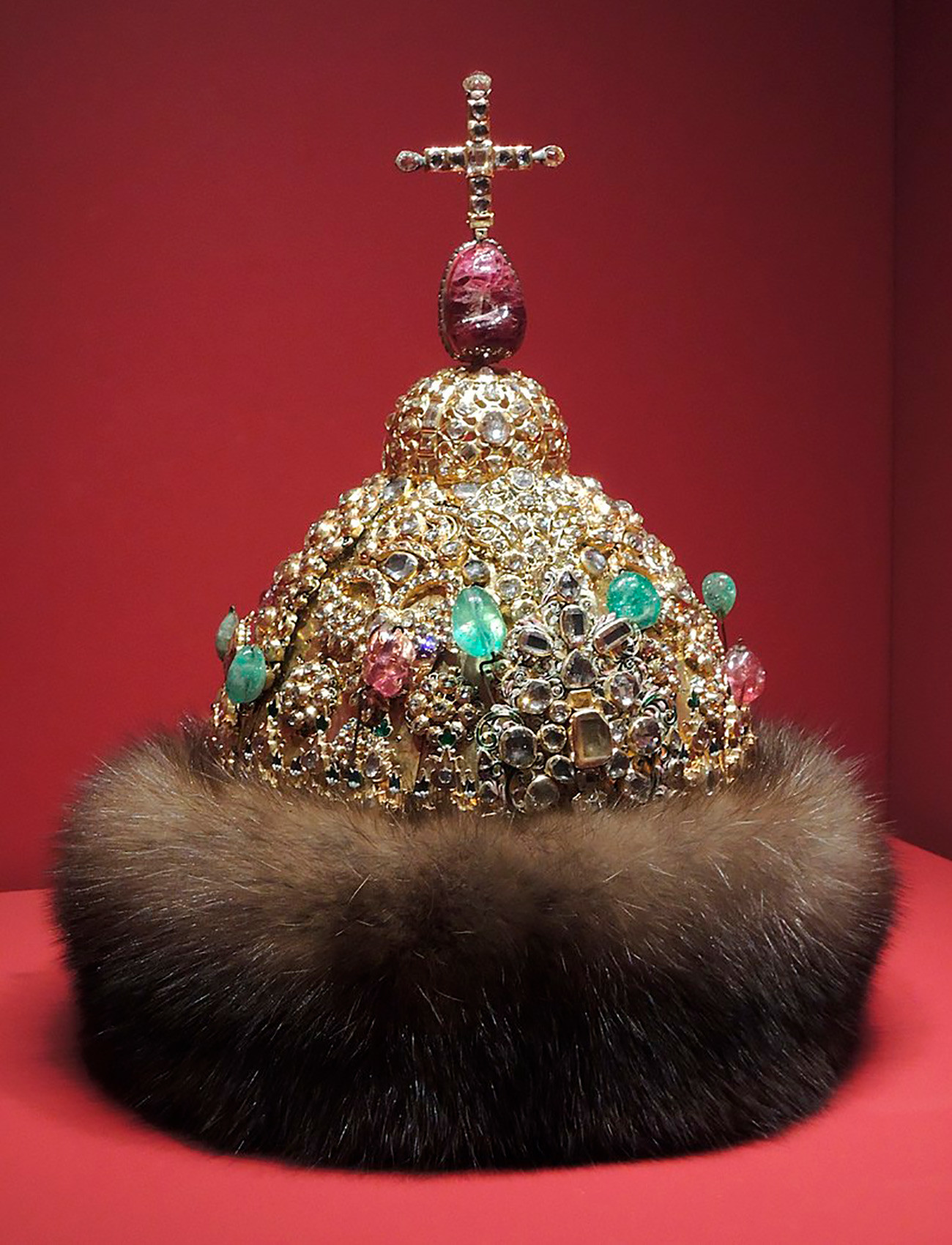

Moscow, Kremlin workshops, early 18th century
Gold, silver, precious stones, glass, painted enamel, casting, chasing, carving, chasing, background carving, niello
Under Peter the Great, the European practice of giving out medallions and decorations with the monarch’s portrait, as a sign of the tsar’s benevolence, came into use in Russia.

Augsburg, late 16th century
Bronze, chasing, casting, carving, gilding
This clock, made in Augsburg in the 16th century, was probably a gift to Ivan the Terrible.

Turkey, the second half of the 17th century
Silver, copper, jade, turquoise, wood, forging, chasing, gilding, incrustation
This ceremonial mace belonged to Ivan Mazepa, who betrayed Peter the Great and defected to the Swedes. The mace was most likely seized after the Battle of Poltava (1709).

Nurenberg, 17th century
Silver, non-precious metal, carving, chasing, punching, gilding
The ‘amusement cups’ were popular among the European nobility and loved by Peter the Great, who had an array of ‘amusement’ tableware in his palaces in St. Petersburg. This is one of them.

China, before 1755
White-colored metal, wood, ivory, ink, natural die, varnish, thread from plant fiber, gilding, punching, sculptural carving, gilding, painting
This wonderful Chinese toy still works to the present day – it moves linearly and makes turns, while the toy musicians play their instruments, and the crew members ‘drive’ the boat! (A movie about the boat’s operation can be seen at the exhibition.)

London (?), the 1700s. Maker Paul Lullen
Copper alloys, steel, polished steel, silver, enamel, diamonds, rubies, gilding, punching, glass, silk
This clock must have been made for the occasion of Peter the Great’s visit to London during his Great Embassy of 1697-1698 and accepted by the tsar as a gift.

Watercolor. Russia, 1730s
Paper, brush, pen, gilding, ink, watercolors
This is a watercolor painting by Ottmar Elliger the Younger (1666–1735), a Dutch painter from Germany.

China, Ming dynasty (1368–1644)
Gold, rubies, sapphires, mineral paint (crushed stones), filigree
Another beautiful piece from Peter’s Chinese collection; this pin was probably never used to hold any woman’s hair – because it was simply too expensive.

Siberia, 2nd–1st centuries BC
Gold, cornelian, glass, black stone, casting, incrustation
This unique decoration is not primitive, it’s just more than two thousand years old. This waist plate comes from Siberian nomadic kings. It was worth a fortune, and it’s a miracle that it still exists, considering the nomadic kings didn’t have palaces and treasuries to store such things.

Moscow Kremlin workshops, the 1680s
Silver, gold, gems, diamonds; casting, chasing, carving
This cap (crown), created in the 1680s in Moscow, was given to Peter when he ruled the country together with his brother Ivan (Ivan's crown was much simpler). Peter last put this cap on in 1696.
Some of the most amazing artifacts from the private collection of Peter the Great are on display in the Moscow Kremlin museums till March 8, 2020
If using any of Russia Beyond's content, partly or in full, always provide an active hyperlink to the original material.
Subscribe
to our newsletter!
Get the week's best stories straight to your inbox